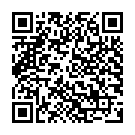|
|
|
| Module code: MP2202.OPT |
|
|
4V (4 hours per week) |
|
5 |
| Semester: 2 |
| Mandatory course: yes |
Language of instruction:
German |
Assessment:
Oral examination
[updated 21.10.2024]
|
MP2202.OPT (P213-0110) Medical Physics, Master, ASPO 01.04.2019
, semester 2, mandatory course
MP3202.OPT Medical Physics, Master, SO 01.10.2025
, semester 2, mandatory course
|
60 class hours (= 45 clock hours) over a 15-week period.
The total student study time is 150 hours (equivalent to 5 ECTS credits).
There are therefore 105 hours available for class preparation and follow-up work and exam preparation.
|
Recommended prerequisites (modules):
None.
|
Recommended as prerequisite for:
|
Module coordinator:
Dr. Sebastian Markert |
Lecturer:
Dr. Sebastian Markert
[updated 02.10.2024]
|
Learning outcomes:
After successfully completing this course, students will be able to explain the physical properties of light and - depending on the application - describe light as a beam, wave or particle. They will be able to formally describe imaging systems and quantify deviations from the assumptions of geometric optics. Students will be able to explain the interaction of light with biological tissue, identify the dominant mechanisms in different situations and assign them to different diagnostic and therapeutic requirements.
On the basis of this knowledge, they will be able to explain the function and application of different medical-optical devices and procedures.
Students will be able to assess the properties of the laser radiation relevant for medical technology and explain its interaction with biological tissue. They will be able to assess the hazards posed by different lasers and take the appropriate safety measures. They will be familiar with different types of lasers and can assign them to different diagnostic and therapeutic applications based on their properties.
[updated 21.10.2024]
|
Module content:
1. Basics:
1.1 Electromagnetic spectrum
1.2 Reflection and refraction
1.3 Interference and coherence
1.4 Diffraction
1.5 Interaction between light and matter
2. Imaging optics:
2.1 Refraction on spherical surfaces
2.2 Projection equation
2.3 ABCD matrix formalism
2.4 Classic eye-related devices
2.5 Apertures and pupils
2.6 Diffraction-limited resolution and optical transfer function
3. Other optical components:
3.1 Sources of light
3.2 Radiation detectors
3.3 Glass fibers
3.4 Optical filters
4. Tissue optics: Propagation of light in biological tissue
4.1 Absorption
4.2 Multiple scattering
4.3 Fluorescence
5. Medical-optical devices and procedures:
5.1 Scanning electron microscopy
5.2 Ophthalmological equipment
5.3 Light microscopy and high-resolution microscopy
5.4 Electron microscopy
6. Laser physics and technology:
6.1 Properties of laser radiation
6.2 Basic structure of a laser
6.3 Different types of lasers
7. Laser safety
8. Lasers in diagnostics
8.1 Laser spectroscopy and fluorescence diagnostics
8.2 Optical coherence tomography (OCT)
9. Lasers in therapy:
9.1 Basics: Interaction of lasers with tissue
9.2 Photodynamic therapy (PDT)
9.3 Coagulation, vaporization, ablation, “laser scalpel”,
9.4 Examples from ophthalmology, dermatology and dentistry
[updated 21.10.2024]
|
Teaching methods/Media:
Blackboard, lecture notes, transparencies, animations
[updated 21.10.2024]
|
Recommended or required reading:
Berlien, Hans-Peter; Müller, Gerhard J.: Applied Laser Medicine, Springer, 2003
Hecht, Eugene: Optik, De Gruyter, (akt. Aufl.)
Kühlke, Dietrich: Optik: Grundlagen und Anwendungen, Harri Deutsch, (akt. Aufl.)
Lipson, Stephen G.; Lipson, Henry S.; Tannhauser, David S.: Optik, Springer, 1997
Niemz, Markolf H:: Laser-Tissue-Interactions, Springer, (akt Aufl.)
Pedrotti, Frank L.; Pedrotti, Leno S.; Bausch, Werner; Schmidt, Hartmut: Optik für Ingenieure, Springer, (akt Aufl.)
Gerhard, Christoph: Tutorium Optik: Ein verständlicher Überblick für Physiker, Ingenieure und Techniker (akt. Aufl.), online in der htw Bibliothek verfügbar
[updated 21.10.2024]
|

